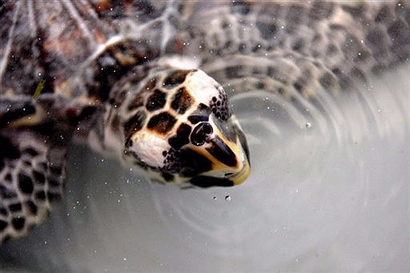 © November 17, 2008 - All rights reserved |
 |
KUALA LUMPUR, Malaysia — Mosques in Malaysia's Terengganu state, which was once a major turtle breeding ground, will give an unusual sermon on protecting the endangered animals this Friday, conservationists said.
Imams, or religious leaders, will stress the importance of protecting the environment and warn against egg poaching, pollution of the seas and uncontrolled fishing.
"If this attitude continues, imagine then what would be left for the future generation? Maybe one day our grandchildren will no longer know about turtles," the sermon reads according to a copy obtained by AFP.
Rahayu Zulkifli from the World Wildlife Fund (WWF), which runs a turtle conservation project in Terengganu, said the idea of preaching about conservation was a joint initiative with local imams.
"In a Malay Muslim-dominated society like this, they look up to what the imams say and this is a way to get the message down to the local communities, where turtle eggs are still consumed freely," she told AFP.
Terengganu was once famed for its population of leatherback turtles, which in the 1950s used to struggle up the beaches in their thousands to lay eggs in the sand.
Their numbers dwindled to the point that in 2007 none appeared, raising fears they had been completely wiped out.
This year they made a surprise return and there were eight nestings, but none of the eggs were fertilised because of a lack of males in the area, said Munir Mohamad Nawi, state fisheries department director.
"Nevertheless it has improved a lot this year and it shows positive results for our conservation efforts so we must press on," he told AFP.
"The sermon will help raise awareness among Muslims in this state on their responsibility to conserve nature, particularly the leatherback turtles, because it is part of our heritage."
Terengganu's beaches are also landing sites for green turtles - the second largest species after the leatherbacks - the Olive Ridley turtle and the hawksbill, although sightings of the latter two are increasingly rare.